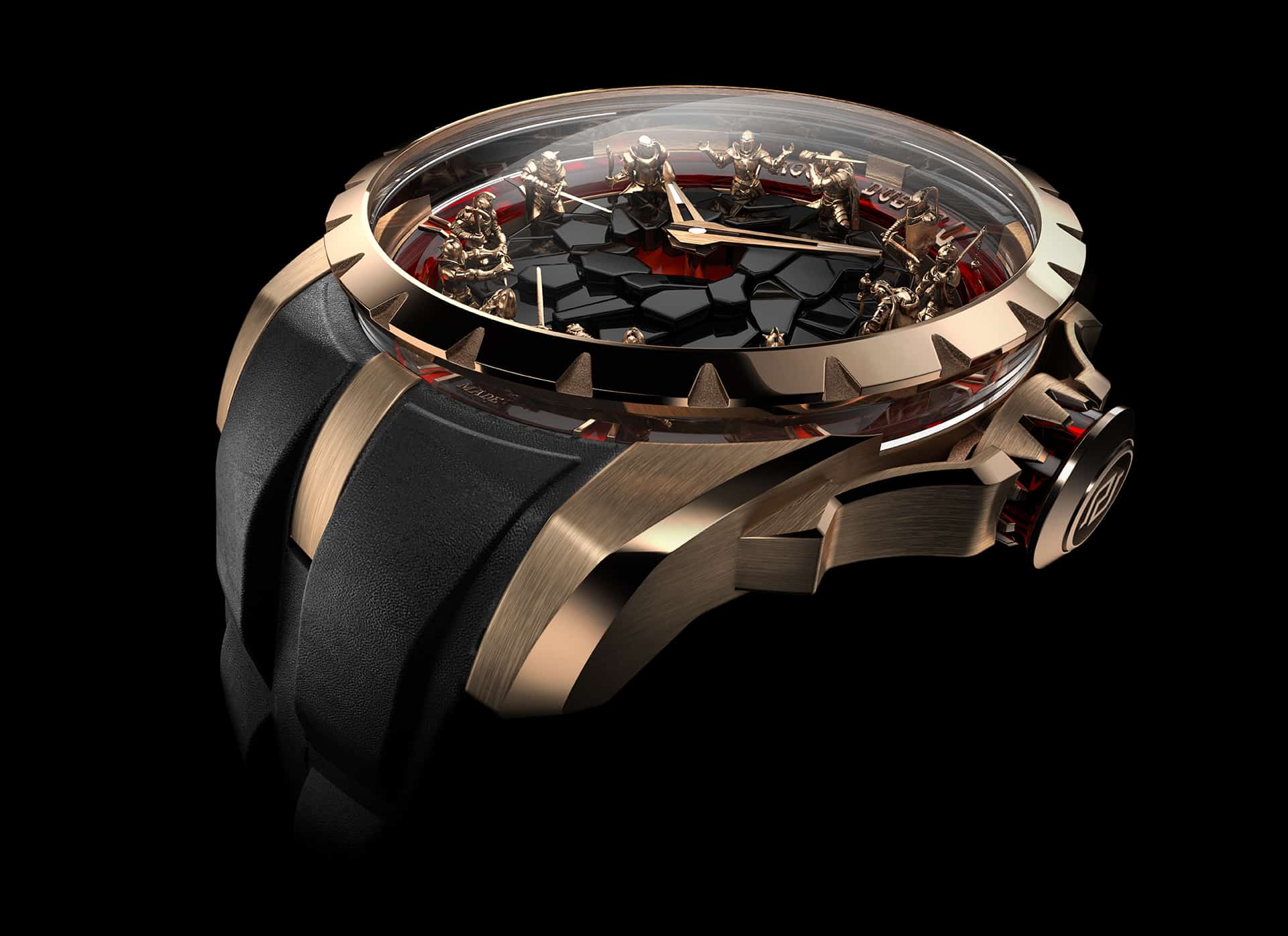On 1 November, filmmaker and explorer James Cameron unveils the Oyster Perpetual Deepsea Challenge. Inspired by the experimental watch that accompanied him on his historic 10,908-metre (35,787-foot) descent into the Mariana Trench on 26 March 2012, the Deepsea Challenge represents a new milestone in the world of Rolex divers’ watches.
Guaranteed waterproof to a depth of 11,000 metres (36,090 feet), crafted from RLX titanium, and equipped with a helium escape valve and the Ringlock system, it is capable of accompanying divers in any environment – during open-water diving, submersible dives or in hyperbaric chambers. A watch designed to turn pressure into an ally in any situation, and an invitation to expand yet further the horizons of the deep.

The Rolex Deepsea Challenge, made from RLX titanium
The brand crafted this watch from RLX titanium, and equipped with a helium escape valve and the Ringlock system. The watch is capable of accompanying divers in any environment. For example during open-water diving, submersible dives or in hyperbaric chambers. It was designed to turn pressure into an ally in any situation. It is without a doubt an invitation to further expand the horizons of the deep.

The spectrum of Rolex expertise in an exceptional divers’ watch
The ultimate watch of the deep, the Deepsea Challenge is a diver with unprecedented credentials, designed to withstand extreme pressure. It required Rolex years of research to overcome the watchmaking and manufacturing challenges that its fabrication presented.
Originally, the experimental watch of 2012 was attached to the manipulator arm of James Cameron’s submersible. the Deepsea Challenge is designed to be worn on the wrist. From the production of the case to that of the bracelet, each element of this 50 mm watch has been crafted with everyday use in mind.
A watchmaking accomplishment made possible by using a grade 5 titanium alloy selected by Rolex: RLX titanium. Thanks to this robust and particularly lightweight metal, the new watch is 30% lighter than the experimental model of 2012.

Rolex Deepsea Challenger with Glidelock and Fliplock
To create a timepiece of harmonious and ergonomic proportions, Rolex made modifications to some of the components. They slimmed down the crystal, for instance. The Deepsea Challenge is distinctive among the Professional watches. In particular for the visible grain in its satin finish and the polished edges of its lugs.
The bracelet extension systems – Rolex Glidelock and the Fliplock extension link – allow the watch to be worn over a diving suit up to 7 mm thick. The Deepsea Challenge incorporates the full spectrum of Rolex’s expertise in divers’ watches.

Chromalight display
The Rolex Deepsea Challenge includes all the major innovations developed by the brand over many years. This includes the Ringlock system, a patented case architecture that enables the watch to withstand extreme pressure.
The helium escape valve reduces the pressure inside the case which could otherwise damage the watch. The Triplock crown, with three sealed zones; and the Chromalight display, whose long-lasting luminescence provides exceptional legibility.

Tested with Comex, Compagnie Maritime d’Expertises
To test the waterproofness of each Deepsea Challenge, Rolex specially developed, in partnership with Comex (Compagnie Maritime d’Expertises), an ultra-high-pressure tank. This tank is can reproduce a test pressure equivalent to a depth of 13,750 metres (45,112 feet).
Calibre 3230 self-winding movement
At the heart of the Oyster case is calibre 3230, a movement entirely developed and manufactured by Rolex. A consummate demonstration of technology, this self-winding movement contains several patented components. For example, the Chronergy escapement and the Parachrom hairspring, insensitive to magnetic fields, as well as Paraflex shock absorbers.
Thanks to its barrel architecture and the escapement’s superior efficiency, calibre 3230 offers a power reserve of approximately 70 hours. The Rolex Deepsea Challenge carries the Superlative Chronometer certification and boasts chronometric precision of the order of –2 /+2 seconds per day.

A homage to explorers of the ABYSS
The brand engraved the watch with the words “Mariana Trench” as well as “23-01-1960” and “26-03-2012” on the case back. A tribute to two historic dives into the Mariana Trench: that of oceanographer Jacques Piccard and U.S. Navy Lieutenant Don Walsh aboard the Trieste, in 1960, and James Cameron’s solo descent in DEEPSEA CHALLENGER, in 2012.
Both expeditions took experimental Rolex watches with them. The design of the watch that accompanied James Cameron’s dive presented a sizeable challenge for the brand in a short production time. Tested to withstand a depth of 15,000 metres (49,200 feet) and 17 tonnes of pressure on the crystal, Rolex developed it in only a few weeks. The reason is the extensive experience of the Rolex teams in the domain of deep-sea divers’ watches.
Throughout the seven-hour dive, this experimental watch flawlessly withstood the tremendous pressure, like the 1960 watch had also done. Today, the Deepsea Challenge marks a new milestone in the human and technical adventure.

Rolex: the incessant quest for waterproofness
Waterproofness has been a fundamental pillar of Rolex’s watchmaking expertise. In 1926, Rolex unveiled the Oyster case. A completely hermetic construction in which the bezel, case back and winding crown screwed down against the middle case.
For nearly a century, Rolex has developed ever more advanced systems. To name a few, the Twinlock and Triplock crowns, and the Ringlock system. These systems clearly protect the inside of its watches. To meet the needs of deep-sea diving professionals, in 1953 Rolex released the Submariner. This timepiece was therefor guaranteed waterproof to 100 metres (330 feet) and today to a depth of 300 metres (1,000 feet). In 1967, the brand launched the Sea-Dweller. Rolex fitted this divers’ watch therefor with a helium escape valve and guaranteed waterproof to 610 metres (2,000 feet), then to 1,220 metres (4,000 feet).
Rolex presented the Deepsea in 2008, as a watch made for the challenges of the deep. Equipped with the Ringlock system, it can resist the pressure exerted at 3,900 metres (12,800 feet). With the Oyster Perpetual Deepsea Challenge, whose waterproofness is guaranteed to 11,000 metres (36,090 feet), the deepest depths open new horizons.


